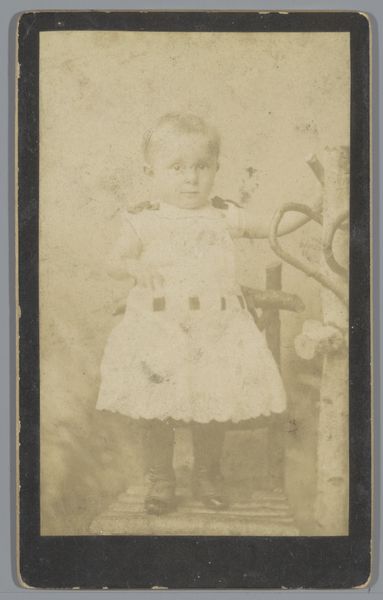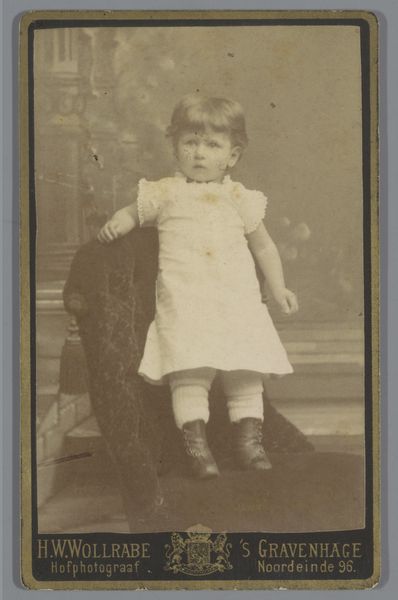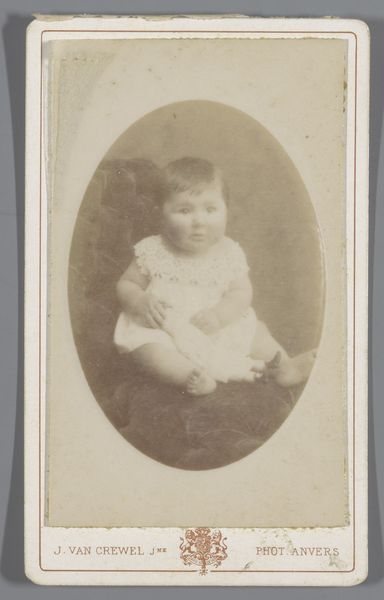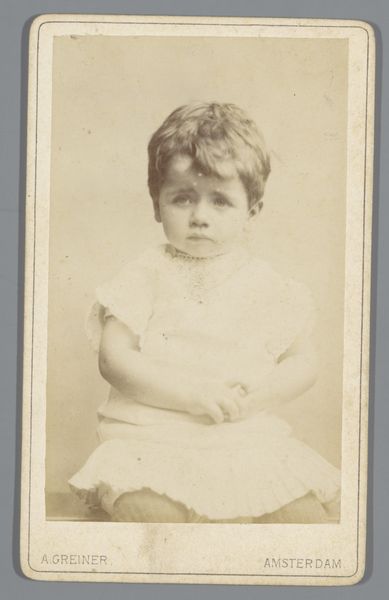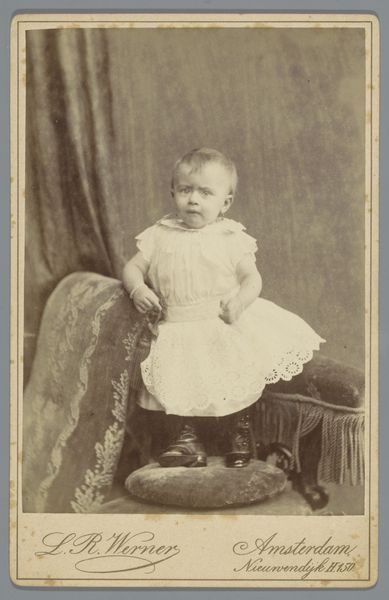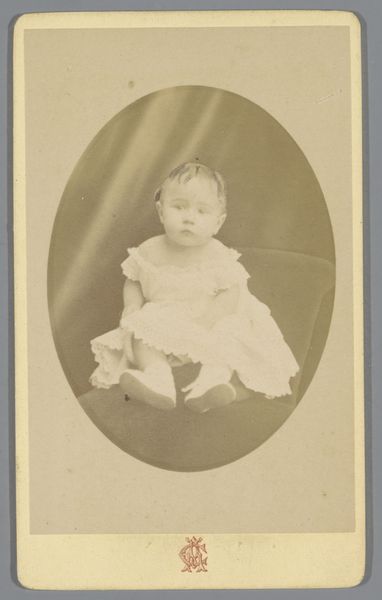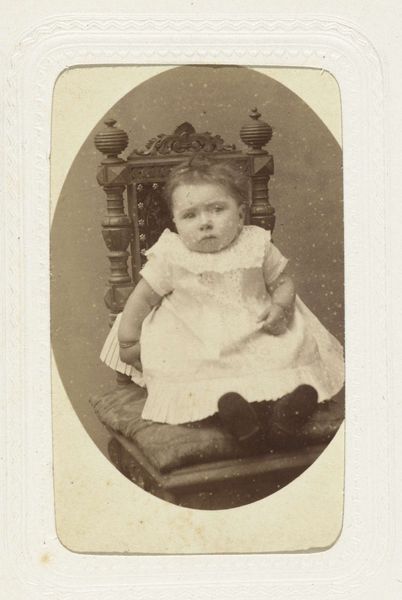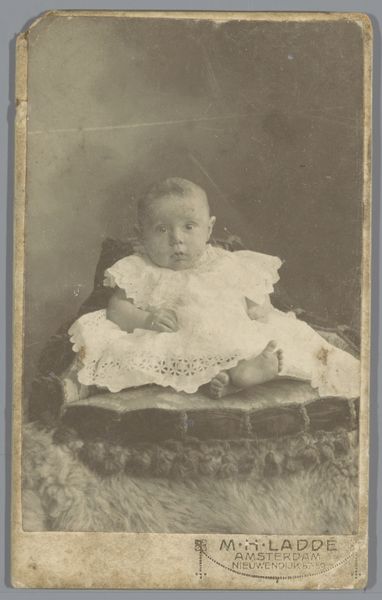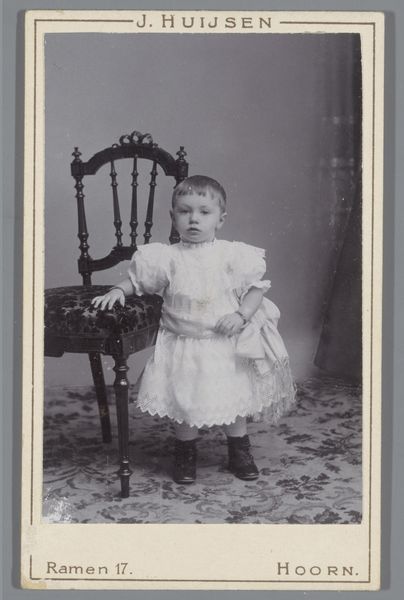
photography
#
portrait
#
photography
Dimensions: height 104 mm, width 66 mm
Copyright: Rijks Museum: Open Domain
Editor: This is a photograph titled "Portret van Johanna Geertruida Jonker" by Gebroeders Cordes, dating back to 1895-1896. It has this lovely sepia tone, and the subject, a small child, seems posed very deliberately. What symbols or imagery do you find particularly striking? Curator: This image speaks volumes about cultural memory. Photography itself, still relatively young at this time, was becoming a tool for memorialization, to preserve images of loved ones. Consider the backdrop: patterned fabric suggests domesticity, safety. The child's white dress hints at purity, innocence, and even perhaps, status. What does the fact that the child is on a floral patterned and elevated surface evoke for you? Editor: Maybe like a throne of childhood, some sort of symbol for new life or importance. And the fact that everything, backdrop, blanket, clothes are all a similar cream or sepia color creates unity to emphasize childhood’s innocence, I think. But wouldn't any of those materials have been common in a studio, or do they mean something specific? Curator: The visual language certainly draws from recognizable themes, yes. Even common props could symbolize something deeper about societal values regarding childhood during that era. Early photography aimed for permanence and preservation but also, to visually express family and cultural ideals. What emotions does the image evoke for you? Editor: It's definitely nostalgic, maybe a little melancholy. It feels very posed, almost like a stage setting. Looking at it now, I can also appreciate the skill in staging and lighting in an early photograph like this. It feels timeless. Thank you, that has changed my perspective of this work. Curator: Indeed. It invites us to reflect on how we create and perceive images, particularly in preserving moments and constructing symbolic meaning through portraiture, then and now. It's fascinating to trace those continuities across time.
Comments
No comments
Be the first to comment and join the conversation on the ultimate creative platform.
